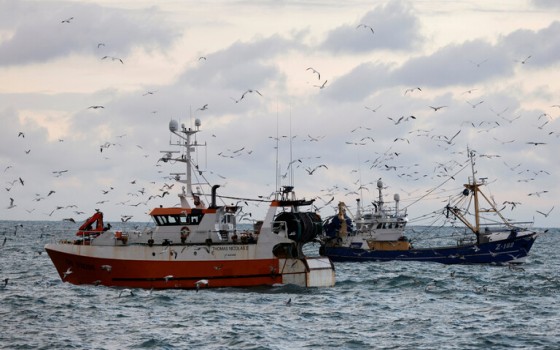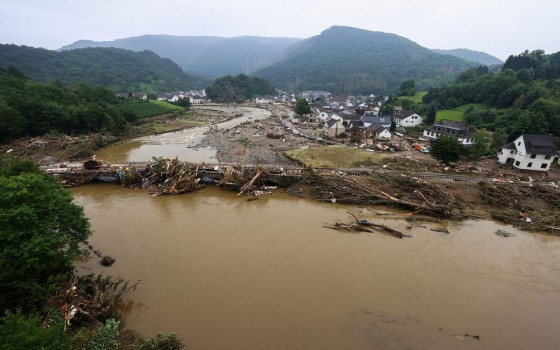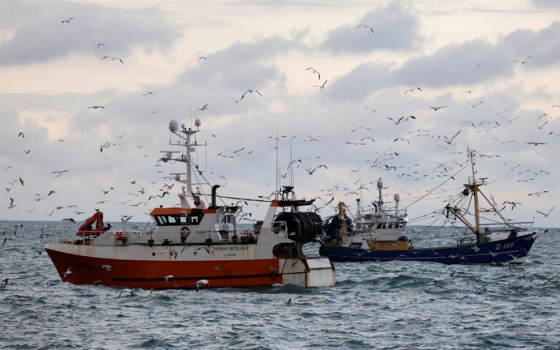
Climate change in Europe: the regional impact and the largest sources of emissions and reduction of greenhouse gases

- Europe and Arabs
- Friday , 24 March 2023 13:35 PM GMT
Brussels: Europe and the Arabs
The European Parliament published a report on the developments of the climate change file in Europe. The report included a lot of information about the regional impact, the largest sources of emissions, and the countries that are considered the largest in this regard, in addition to other information, according to what was stated in the report, which the Parliament mentioned in a tweet on its Twitter website. the details :
Carbon dioxide is not the only greenhouse gas causing global warming
The most famous greenhouse gas is carbon dioxide (CO2). It accounted for almost 80% of the volume of all greenhouse gas emissions in the European Union in 2021.
Other greenhouse gases are present in smaller quantities in the atmosphere, but may have a greater warming effect. For example, methane accounted for 12% of the impact of greenhouse gas emissions in the European Union in 2021.
Some greenhouse gases occur naturally in the atmosphere, but human activity contributes to their accumulation. Others are man-made, such as the fluorinated gases that are used in industry. The global warming potential is often several thousand times more powerful than carbon dioxide.
The largest emitter of greenhouse gases in the European Union: countries and sectors
The European Union is the world's third largest emitter of greenhouse gases after China and the United States, followed by India, Russia and Japan (2015).
Within the European Union, the top five emitters in 2019 were Germany, France, Italy, Poland and Spain. The energy sector was responsible for 77.01% of greenhouse gas emissions in the European Union in 2019, followed by agriculture (10.55%), industry (9.10%) and the waste sector (3.32%).
Evolution of greenhouse gas emissions in the European Union since 1990
In 2008, the European Union set a target to reduce greenhouse gas emissions by 20% by 2020 compared to 1990 levels. Significant progress has been made: in 2015 there was already a 22% reduction compared to 1990 levels.
In 2014, the European Union set a new target to reduce greenhouse gas emissions by at least 40% by 2030 compared to 1990 levels. According to the European Environment Agency, projected reductions based on the performance status of EU measures in 2017 will fall short of the target. It estimates that there will be a decrease of about 30% in 2030.
Impact of climate change on Europe
Climate change is already affecting Europe in different ways, depending on the region. It can lead for example to biodiversity loss, forest fires, lower crop yields and higher temperatures. It can also affect people's health. For example, people can die as a result of heat waves.
Transport emissions in the European Union: facts and figures
Transportation is the only sector where emissions are still higher than they were in 1990.
Transport is responsible for nearly 30% of the total carbon dioxide emissions in the European Union, of which 72% comes from road transport.
Carbon dioxide emissions from cars
Cars and trucks generate about 15% of the carbon dioxide emissions in the European Union. With an average of 1.7 people per car in Europe, other modes of transport, such as buses, are currently a cleaner alternative. However, modern cars can be some of the cleanest modes of transportation if they are shared rather than used by just one person.
Emissions from aircraft and ships
Both aviation and international shipping account for less than 3.5% of total greenhouse gas emissions in the European Union, but have been the fastest growing source of emissions. Emissions from aircraft are expected to increase by up to 10 times in 2050 compared to 1990 while emissions from ships could increase by up to 50%.
United Nations climate negotiations timeline
The European Union is a major player in the United Nations climate change talks and has signed the Paris Agreement. All EU countries are also signatories, but they are coordinating their positions and setting common targets for reducing emissions at the EU level.












No Comments Found